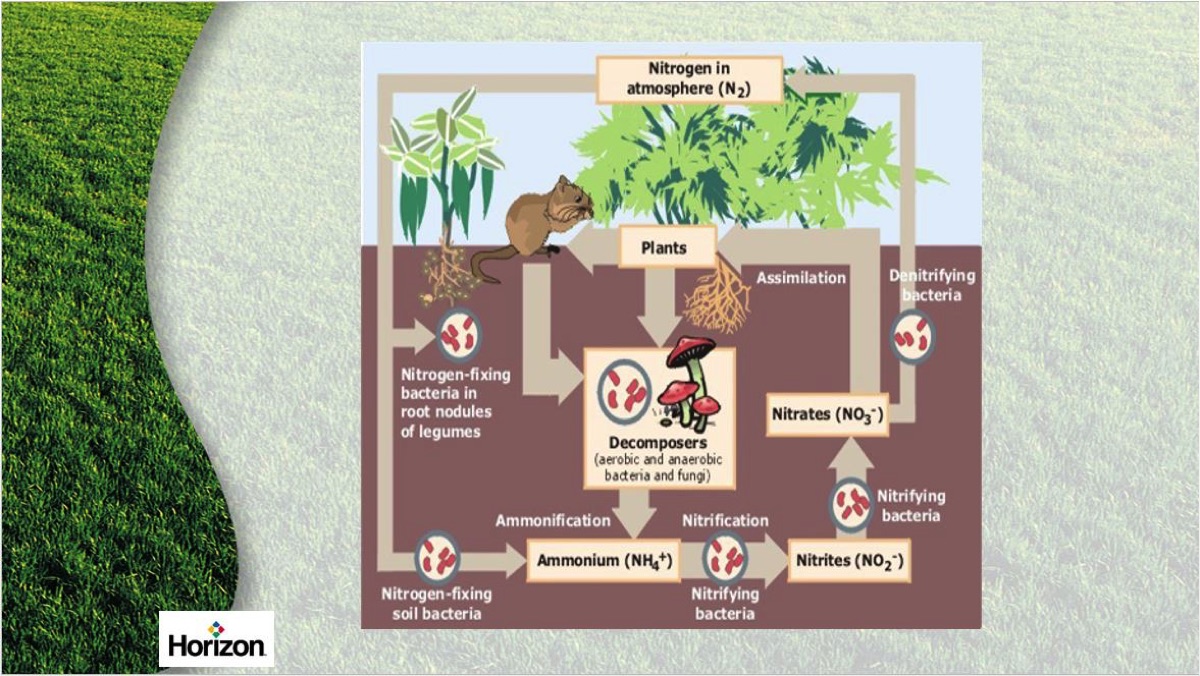
Why Is The Nitrogen Cycle Important In Your Soil?
September 26, 2014
If you're using synthetic fertilizers on your customers' turf, you're slowly killing the beneficial bacteria that build the soil. In part 15 of our Drought Solution video series, you'll learn how the nutrient and nitrogen cycles work and how they directly contribute to soil and plant health.
Video Transcript
Does everybody know what nutrient cycling in the soil is? Has anybody ever heard of the nitrogen cycle?
Almost exactly the same concept. You'll hear it as nutrient cycling or nitrogen cycle and here's how it works.
You have plant material up top. You have us as humans and the atmosphere up here putting inputs into the soil.
But let's start right here at the natural level. Plant material, organic matter, mulching mowing, and all of those plants that you put back into the soil.
What happens is these little jellybean looking characters here, that are all around here in the soil, in a healthy soil. These are the beneficial bacteria, the fungi, the mycorrhizae. All of these little decomposers that take this organic material and they convert it.
As they're feeding on that organic, all these little guys use that as their food source, their energy source. As they feed on that, what do we produce?
Ammonium nitrate in a non-synthetic form. This is how Mother Nature keeps the forest green.
We're producing it naturally as we continue to build that soil. If we decide that we're going to put a synthetic in here, what it does is it starts killing all these guys. Cause these guys don't react to salt at all. These guys do not like salt. So we start killing them off and then this whole cycle is disrupted and you get a collapse of soil.
If we add in organic inputs here, now we're making these guys stronger. And the stronger they get, the more they multiply. The better they're working for us in our soil profile, the more ammonium nitrates they're making. The more nutrients we have in our soil, the better our plants look.
